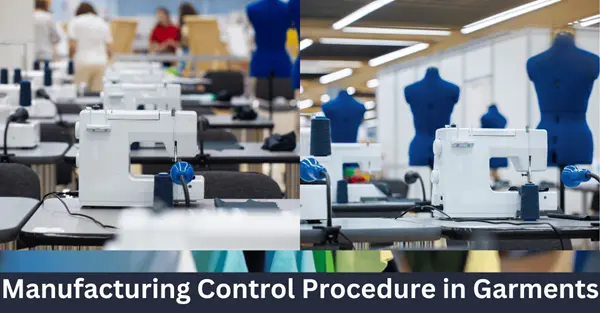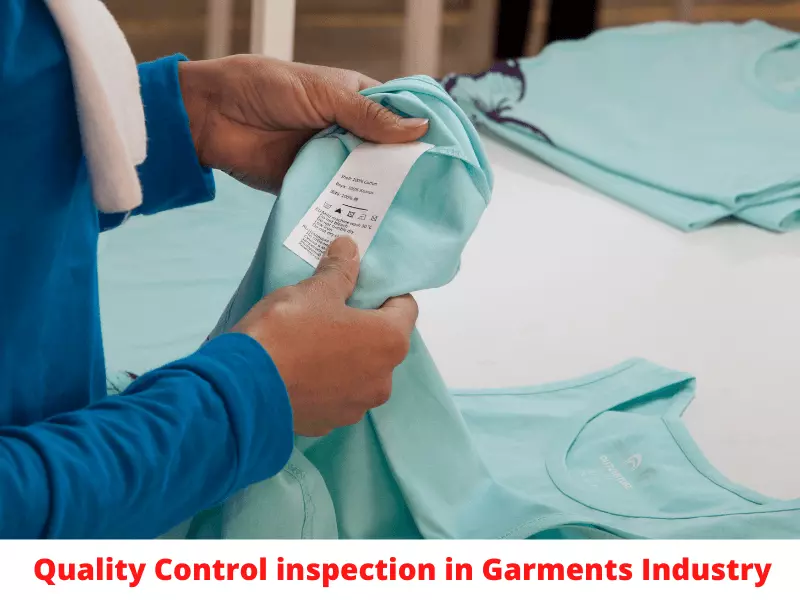Manufacturing Control Plan Procedure in the Garments Industry
1. Introduction
The purpose of this Standard Operating Procedure (SOP) is to establish a comprehensive Manufacturing Control Plan that ensures consistent quality and process adherence across all stages of production, from procurement to final inspection in the garments industry.
2. Scope
This procedure applies to the following departments and processes within any garments manufacturing industry.
- Procurement: Sourcing and purchasing of raw materials and components.
- Store: Storage and handling of raw materials, components, and finished goods.
- Cutting: Cutting of fabric and materials according to production requirements.
- Fusing: Application of fusing to cut parts as required.
- Sewing: Assembly of garments through sewing processes.
- Wash: Washing of garments according to customer and process specifications.
- Finishing: Final touches, including ironing, trimming, and quality checks before packaging.
- Planning: Development of production schedules and resource allocation.
- Production: Execution of manufacturing processes according to plans and standards.
- Quality Assurance: Monitoring and ensuring that products meet specified quality standards.
- Final Inspection: Final checks and approvals before product dispatch.
3. Responsibilities
- Department Heads: Ensure the implementation of the Manufacturing Control Plan in their respective departments.
- Quality Assurance Manager: Will prepare MCP and oversee the entire process to ensure compliance with quality standards.
- Production Manager: Coordinates between departments to ensure smooth workflow and process integration.
- Procurement Team: Ensures that all materials meet quality requirements before approval and storage.
- Storekeepers: Maintain accurate inventory records and ensure proper storage conditions.
- Supervisors and Operators: Follow the procedures specific to their roles and report any issues immediately.
- Maintenance Team: Ensure all equipment is functioning correctly and is regularly maintained.

4. Procedure
4.1 Procurement
- Supplier Selection: Select suppliers based on quality, reliability, and compliance with specifications.
- Incoming Material Inspection: Inspect all raw materials upon arrival to ensure they meet the required standards before acceptance.
- Documentation: Maintain records of all procurement activities, including supplier evaluations and material inspections.
4.2 Store
- Storage Conditions: Store all materials in designated areas with appropriate conditions to prevent damage or contamination.
- Inventory Management: Regularly update inventory records and conduct periodic audits to ensure accuracy.
- Issue of Materials: Follow a first-in, first-out (FIFO) system for issuing materials to production.
4.3 Cutting
- Pattern and Layout: Ensure that cutting patterns are accurate and layouts are optimized to minimize waste.
- Quality Checks: Conduct checks on cut parts to ensure they meet size and shape specifications before proceeding to the next stage.
4.4 Fusing
- Temperature and Pressure Control: Maintain appropriate temperature and pressure during fusing to ensure proper adhesion without damage.
- Testing: Perform regular tests on fused parts to check for bonding strength and appearance.
4.5 Sewing
- Standard Operating Methods: Follow predefined sewing methods and techniques to ensure consistency and quality.
- In-Process Inspections: Conduct inspections at key stages of sewing to detect and correct defects early in the process.
4.6 Wash
- Wash Instructions: Follow specific washing instructions for different garments, including water temperature, chemicals, and drying methods.
- Post-Wash Inspection: Inspect garments after washing to ensure no shrinkage, color bleeding, or other defects have occurred.
4.7 Finishing
- Trimming and Ironing: Perform final trimming of loose threads and ironing to achieve the required finish.
- Final Quality Check: Conduct a thorough quality check to ensure the product meets all specifications before packaging.
4.8 Planning
- Production Scheduling: Develop production schedules based on order requirements and available resources.
- Resource Allocation: Allocate necessary resources, including manpower, materials, and machinery, to meet production targets.
4.9 Production
- Process Execution: Follow the established manufacturing processes as per the control plan.
- Monitoring: Monitor production progress and address any issues that arise to avoid delays.
4.10 Quality Assurance
- In-Process Audits: Conduct audits during different stages of production to ensure adherence to quality standards.
- Non-Conformance Management: Identify, document, and take corrective actions for any non-conformances detected during production.
4.11 Final Inspection
- Visual and Dimensional Checks: Perform visual inspections and dimensional checks to ensure the finished product meets all specifications.
- Approval for Dispatch: Only products that pass the final inspection should be approved for packaging and dispatch.
5. Documentation and Records
- Control Plan Document: Maintain a comprehensive document that outlines all critical control points and methods for each department for each style.
- Inspection and Test Records: Keep records of all inspections and tests conducted during the manufacturing process.
- Non-Conformance Reports: Document any deviations from the control plan and the actions taken to address them.
- Training Records: Maintain records of training sessions for employees on the Manufacturing Control Plan


